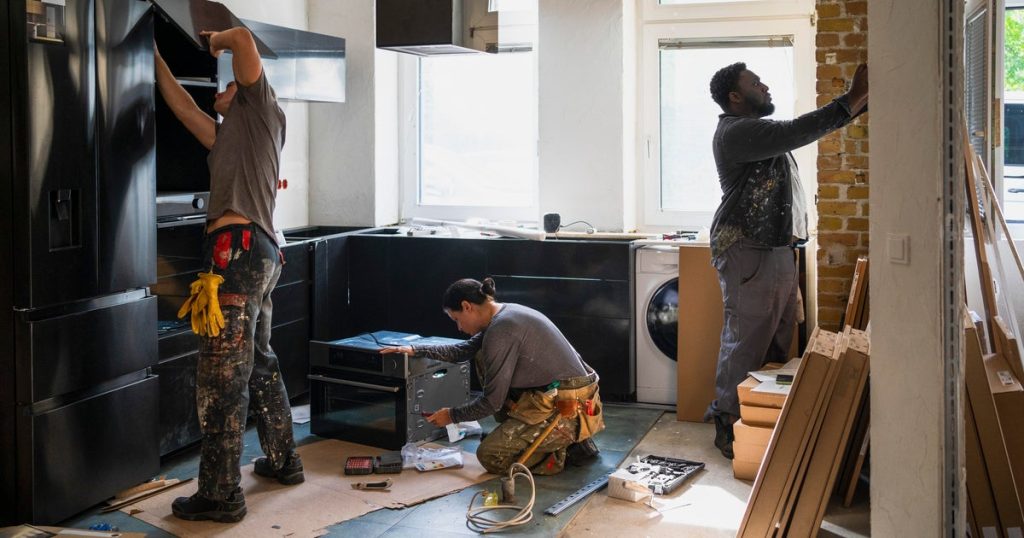Tariffs have significantly impacted the costs of materials commonly used in home renovation projects, prompting many homeowners to reevaluate their plans. With prices already rising for essential materials like lumber, steel, and aluminum, builders find themselves facing increased expenses, which could add as much as $10,000 to the average renovation project. As experts recommend various strategies for homeowners to mitigate costs, the situation underscores the broader implications of trade policies on the housing market.
| Article Subheadings |
|---|
| 1) Context of Rising Material Costs |
| 2) Impacts on Home Renovation Projects |
| 3) Expert Insights on Cost-Saving Strategies |
| 4) The Role of Tariffs in Pricing |
| 5) Future Outlook for Home Renovations |
Context of Rising Material Costs
The current housing market is significantly influenced by rising material costs, which many attribute to tariffs imposed on imports. These tariffs, initiated during recent trade policies, have caused suppliers to raise prices on essential building materials. The National Association of Home Builders (NAHB) reported that 60% of homebuilders are experiencing price hikes from suppliers, further complicated by the recent tariffs on steel and aluminum. The ongoing trade tensions have not only affected pricing but have also created uncertainty among builders, encouraging some to postpone projects or even reevaluate their budgets.
Impacts on Home Renovation Projects
The financial implications of these rising costs are substantial, with estimates suggesting an average increase of approximately $10,000 for home renovation projects. This price escalation affects homeowners across various demographics, making it difficult for many to pursue much-desired renovations. The rise in material costs is not limited to just a few homeowners; it extends to both residential and commercial sectors, creating a ripple effect in the broader construction industry. As builders and homeowners contend with these new financial realities, the overall demand for housing renovations could see a notable decrease, impacting market dynamics.
Expert Insights on Cost-Saving Strategies
Contractors like David Perotti, founder of Fine Home Contracting, have expressed the need for homeowners to adapt their renovation strategies in light of the new pricing landscape. He emphasizes the importance of pre-ordering materials to avoid further inflation in costs. For instance, ordering roofing supplies like shingles in advance can lead to significant savings, often amounting to thousands of dollars. Additionally, experts recommend simple projects that can enhance a home’s aesthetic appeal, such as painting, which provides a quick, low-cost alternative to extensive renovations while still achieving a fresh look.
The Role of Tariffs in Pricing
Tariffs have played a pivotal role in the rising costs of essential building materials, particularly steel and aluminum, which saw significant increases earlier this month. These materials are vital for various structures, from roofing to plumbing and HVAC systems. The tariffs on steel and aluminum can amount to as much as 50% on imports from other countries, especially from Canada, which supplies a significant portion of the United States’ lumber. Such levies create a challenging environment for builders who are already struggling with increasing costs, as they pass these expenses onto customers.
Future Outlook for Home Renovations
Looking ahead, the home renovation market could face further strain if prices continue to rise. Homeowners are urged to budget for increases in renovation costs, with estimates suggesting an additional 30% in expenses related to tariffs. The unpredictability of tariffs and trade policies adds another layer of complexity for builders and homeowners alike, making it essential for them to stay informed about market trends. Ultimately, the collective impact of these factors could reshape the landscape of home renovations in the coming months, leading to more cautious spending and investment decisions.
| No. | Key Points |
|---|---|
| 1 | Rising tariffs are increasing the costs of materials needed for home renovations. |
| 2 | Home renovation costs could increase by approximately $10,000 on average due to these hikes. |
| 3 | Experts recommend pre-ordering materials to save on costs and opting for lower-cost renovations like painting. |
| 4 | Steel and aluminum tariffs are notably affecting the building industry and overall project costs. |
| 5 | The future of home renovations is uncertain with potential for continued price increases due to tariffs. |
Summary
The current landscape of home renovations is significantly impacted by rising material costs due to tariffs, leading to increased expenses for consumers. Homeowners are urged to rethink their renovation plans as prices escalate. Experts suggest implementing cost-saving strategies and retaining flexibility in project scopes, all while remaining informed of the evolving market conditions. As the interplay between tariffs and material costs unfolds, the future of the home renovation market remains uncertain.
Frequently Asked Questions
Question: How are tariffs affecting home renovation costs?
Tariffs imposed on essential building materials have led to significant price increases, directly impacting renovation costs for homeowners.
Question: What are some strategies homeowners can adopt to mitigate these costs?
Homeowners are advised to pre-order materials to lock in prices and consider less expensive aesthetic improvements, such as painting, to enhance their homes.
Question: What materials are most impacted by the recent tariff increases?
Steel and aluminum are notably affected, with tariffs applying to various building materials, including roofing and plumbing supplies.


